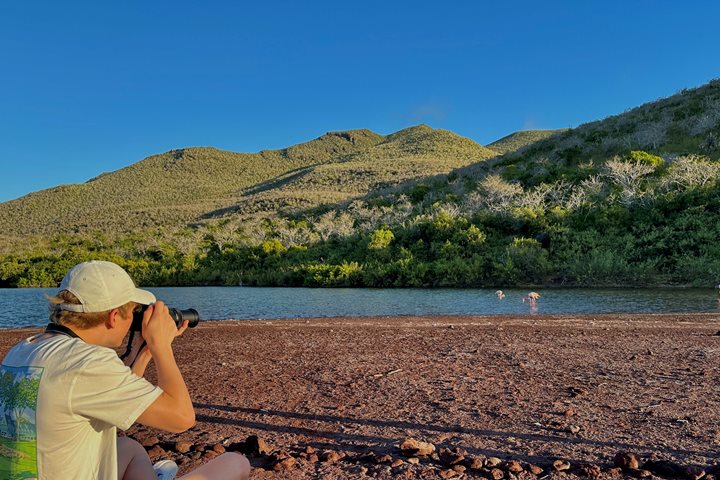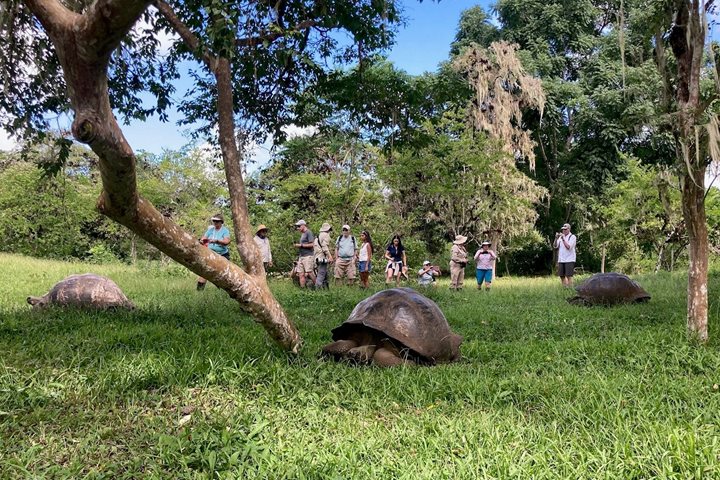We are at the end of the rainy season and at the beginning of the dry season, and now is when it all happens. The islands look green, and Opuntias and Holy Trees show their ephemeral flowers. The ocean is starting to cool, bringing nutrients and fish. Seabirds are engaged in courtships, including frigatebirds, blue-footed boobies, and swallow-tailed gulls. The nests of land birds, like finches and mockingbirds, are still visible. It is the transition between warm and cool when it is all possible.
Sunday afternoon found us exploring Black Turtle Lagoon on the northern side of Santa Cruz Island. I lost count of the number of golden rays we encountered, maybe more than a hundred. The rays surrounded our Zodiacs, coming from different directions, while whitetip reef sharks, blacktip reef sharks, green sea turtles, and spotted eagle rays made appearances. It was low tide, and we observed the roots of the red mangroves exposed above the sea. This is a true pioneer plant, very important for stabilizing mud, and therefore the first in a forest succession. We witnessed the rich service provided by mangrove species. It protects all kinds of invertebrates, mollusks, crustaceans, and insects. We had the best welcome to the Galapagos Islands that one could ever wish for, a golden welcome!
On Monday morning, we visited North Seymour Island. We observed frigates and boobies in courtship, sea lions, and land and marine iguanas. In the afternoon, we went to Rabida, the ideal beach to practice snorkeling. I love spending May in the Galapagos. I love May onboard National Geographic Islander in the company of amazing guests and a lovely group of professional naturalists, crew, and officers…a staff that gives their best to enhance our guests’ experience.







